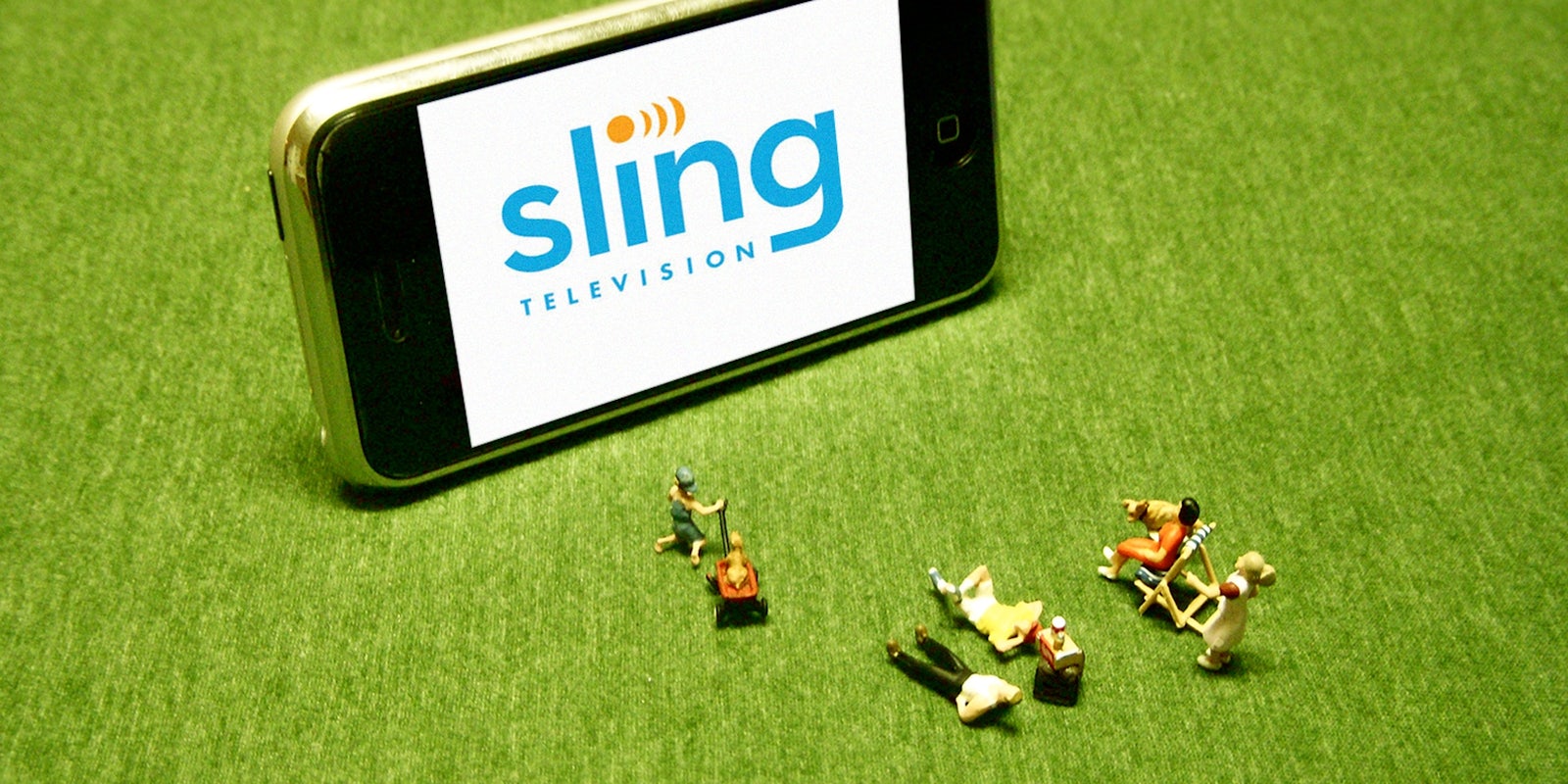For the growing number of cord cutters who miss Sportscenter; Diners, Drive-Ins and Dives; or Anderson 360, a new era has begun.
It’s called cloud TV, and the launch of Dish’s Sling TV in a few weeks marks the first widely available monthly un-cable subscription service offering programming traditionally only available through cable or satellite. For $20 a month, the service offers a dozen “cable” channels, plus content from Maker Studios (which is owned by Disney).
Included in the basic service are ESPN, ESPN2, Disney Channel, ABC Family, Food Network, HGTV, Travel Channel, Adult Swim, TNT, CNN, TBS, and Cartoon Network. There are two additional add-on packs, each costing $5. The Kids Extra includes Disney Junior, Disney XD, Boomerang, Baby TV, and Duck TV, while the News & Info Extra channels include HLN, Cooking Channel, DIY, and Bloomberg. There is also premium video-on-demand programming focusing on recent releases that compares favorably in price and selection with the countless other services that offer similar content.
Also, the service’s portability is a strength, as it is available through almost every connected device, including the Amazon family of Fire TV gizmos, all Roku players, Xbox One, LG and Samsung smart TVs, iOS and Android devices, and Macs and PCs. Perhaps most appealing, Sling TV doesn’t require a long-term commitment and gives users the ability to cancel at any time.
Putting the service through its paces pre-launch, Sling TV appears likely to have no opening-day jitters. On an iPad, two different Roku boxes, and a MacBook Air, the reception was uniformly near flawless. The Roku boxes provided the best experience, showing CNN and ESPN clearly on a 46-inch plasma TV. The on-screen guide is slightly challenging, not always appearing in the same place on different devices, but once you master its quirkiness, you can move from channel to channel and from search to pay-per-view rather easily. The search is decent, but once you get hooked on Amazon Fire TV’s voice-activated search, anything short of that is disappointing. There is no DVR function, but past programs are available through search. (It took me a while to figure that out, as it’s not apparent until you start searching for your favorite shows.)
After spending two full days on a Sling TV and over-the-air diet, the story is less about what the service is now and more about what it can be as it evolves. Cloud TV is meant to be a complement to Netflix and Hulu Plus, but adding both of those premium services brings the monthly total to $35.98 or $36.98 depending on when you signed up for Netflix. Purchasing all three might provide a well-rounded cordless package, but it also yields a lot of duplication and no premium channels such as HBO or Showtime. At this point, consumers still need a cable or satellite subscription to stream those pay networks.
Pairing Sling TV with a good HD antenna offers no duplication and also nets out network shows such as Gotham, Modern Family, Blue Bloods, etc., in addition to the new service’s dozen un-cable nets. Missing from that setup is catch-up viewing unless you still have a VCR, Tivo box, or something like a Tablo unit (an over-the-air DVR). If the goal is fewer set-top devices, this scenario isn’t ideal.
Dish has put together an impressive list of content partners for its launch, showing its long-term commitment to program providers and consumers. Dish appears to have little concern that Sling TV will cannibalize its existing products, which serve more than 14 million customers. The notion that millennials are not interested in investing in costly cable or satellite services is difficult to argue with, but, by the same token, there is no clear evidence that the 25 and under set is interested in paying for any sort of subscription TV service.
The best case scenario for Sling TV is that it receives enough consumer interest that additional cable networks as well as the premiums (HBO, Showtime) see a tipping point and join the service’s lineup … without leading to a large rate hike. (Keep in mind, Sling TV will be competing with Sony’s cloud TV service, which announced a limited launch in November for PlayStation users.)
As is, Sling TV has a variety of networks that should appeal to a large cross-section of tastes and is worth $20 a month on its no-contract model. The sum of portability, picture quality, and content variety places it somewhere between “really nice to have” and “must-have.”
While it sounds like a cliché, the words “TV will never be the same” are completely apropos.
Update 9:35am, Feb. 9: Sling TV is now available to all consumers without an invite; simply sign up at the company’s website.
Photo via JD Hancock/Flickr (CC BY 2.0) | Remix by Jason Reed

